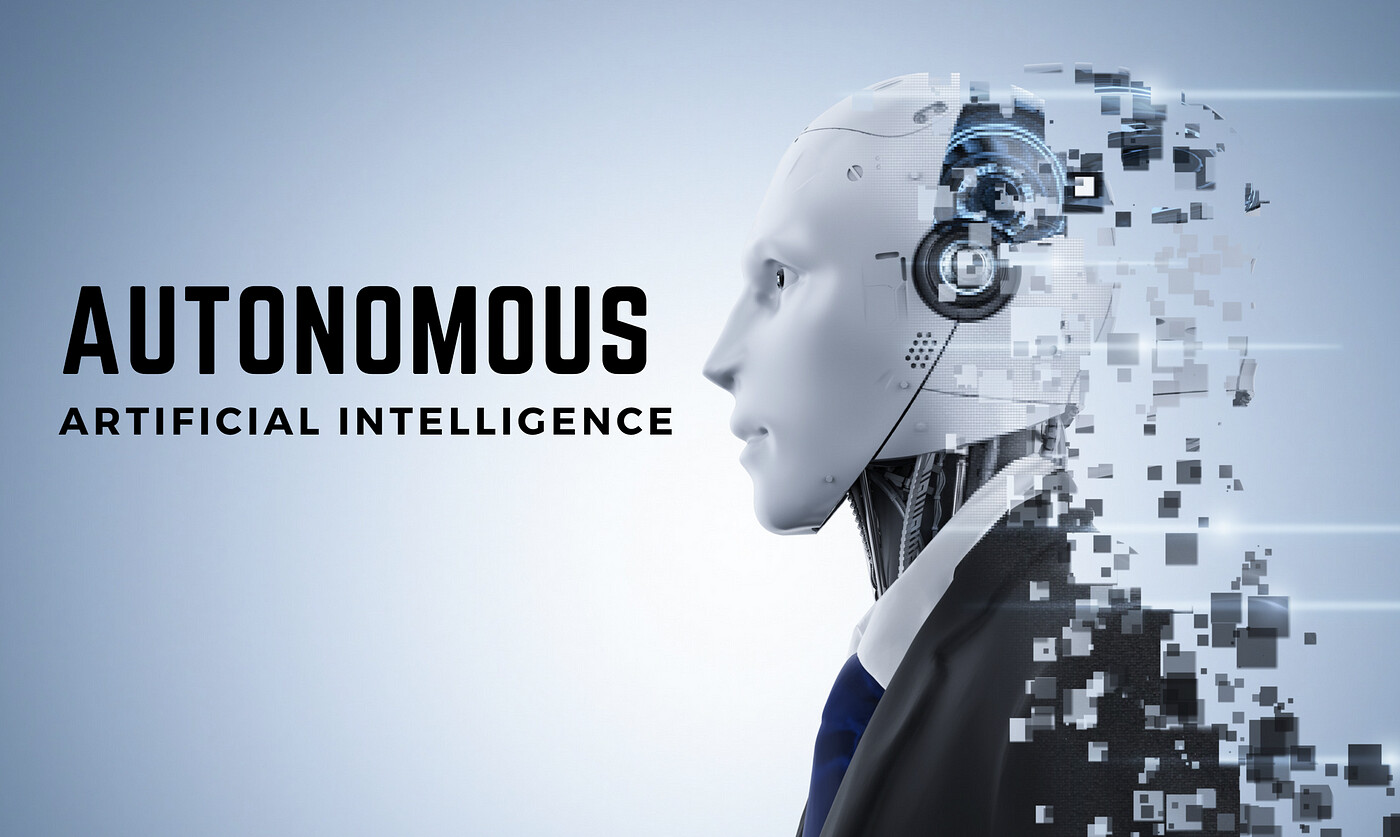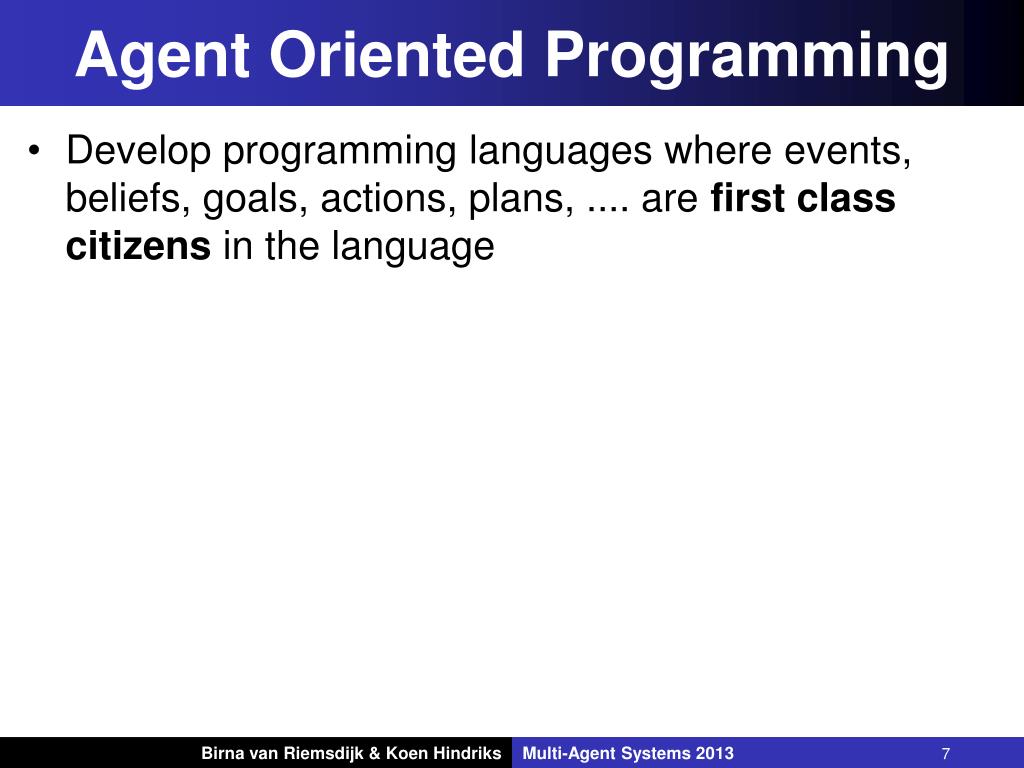Agent-Oriented Programming Tutorials: From Basics to Advanced Techniques
Imagine a software system where programs actively think, make decisions, and collaborate like a team of experts. This is the world of agent-oriented programming (AOP), where autonomous software agents are transforming intelligent applications.
Unlike traditional programming that relies on passive objects responding to method calls, AOP introduces software agents that observe their surroundings, process information independently, and act without constant human oversight. These agents operate more like skilled professionals than simple tools – they evaluate situations, adapt to changes, and work together to achieve complex goals.
This tutorial will show you how AOP fundamentally differs from conventional object-oriented programming. While objects are like well-organized filing cabinets waiting to be accessed, agents are proactive team members who understand their responsibilities and take initiative. You’ll learn how these agents communicate through sophisticated messaging systems that enable rich, dynamic interactions between system components.
We’ll explore practical implementations using modern frameworks like uAgents, a lightweight yet powerful platform for building decentralized agent systems. This framework provides essential tools for creating agents that operate autonomously while maintaining seamless communication with other system components.
Whether you’re new to AOP or looking to deepen your expertise, this tutorial will equip you with the knowledge to harness the power of autonomous agents in your software development projects. From understanding core concepts to implementing real-world applications, you’ll learn how to leverage AOP to create more intelligent, adaptable, and sophisticated software systems.
Core Concepts of Agent-Oriented Programming
Agent-oriented programming (AOP) marks a significant advancement in software development, focusing on creating autonomous software entities called agents that can think and act independently. AOP implements a sophisticated mental model mirroring human decision-making processes through three key components: beliefs, desires, and intentions.
Beliefs represent an agent’s understanding of its environment, similar to how humans maintain a mental model of the world around them. For example, a self-driving car agent maintains beliefs about road conditions, traffic signals, and the position of other vehicles based on its sensor data. These beliefs are continuously updated as the agent receives new information from its environment.
Desires encapsulate an agent’s goals and objectives—what it wants to achieve. As described in research on agent architectures, these can range from simple tasks to complex long-term objectives. For instance, a personal assistant agent’s desires might include scheduling meetings efficiently or maintaining an organized calendar for its user.
Intentions represent the agent’s commitments to particular courses of action that will help achieve its desires. When an agent forms an intention, it develops specific plans and dedicates resources to carrying them out. A robotic warehouse agent that intends to retrieve a package will plot a path through the facility and commit to following it, adjusting its plans if obstacles arise.
What makes AOP particularly powerful is its communication capabilities. Agents can interact with other agents and their environment through sophisticated messaging protocols. This enables them to share information, coordinate actions, and even negotiate with each other to achieve common goals. For instance, multiple robot agents in a warehouse can communicate to optimize package delivery routes and avoid collisions.
The autonomous decision-making aspect of agents sets them apart from traditional software objects. Rather than simply executing predefined methods, agents can reason about their environment, evaluate multiple options, and make independent decisions. They can adapt their behavior based on changes in their environment and learn from experience, making them ideal for complex, dynamic situations where flexibility and intelligence are crucial.
Multi-Agent Collaboration
Modern AI systems now utilize collaborative intelligence through multi-agent systems (MAS). These systems involve multiple autonomous agents working together, each with unique capabilities, to solve complex challenges that a single agent cannot handle alone.
Effective task distribution is crucial for multi-agent collaboration. Like a coordinated team, agents break down complex objectives into manageable subtasks. In software development, for example, different agents might handle code generation, code review, and quality assurance. This division of labor allows for parallel processing and specialized expertise, significantly improving overall system efficiency.
Real-time communication is essential for successful multi-agent systems. According to recent research, agents must share capabilities and exchange time-sensitive data to maintain high scalability and operational efficiency. This communication involves creating a dynamic environment where agents share insights, coordinate actions, and adapt strategies based on collective intelligence.
Performance tuning in multi-agent systems requires a careful balance. Each agent needs clear objectives, well-defined interaction protocols, and efficient resource allocation. The system must manage the balance between agent autonomy and coordinated action, ensuring individual agent decisions align with overall system goals while avoiding conflicts or redundant efforts.
One of the most powerful aspects of multi-agent collaboration is its adaptive nature. Agents can dynamically adjust their roles and responsibilities based on changing conditions or requirements. If one agent encounters difficulties, others can step in to provide support or take over tasks, creating a robust and resilient system. This flexibility allows multi-agent systems to handle unexpected situations and maintain performance even when individual components face challenges.
Multi-agent collaboration transforms complex problem-solving by enabling autonomous agents to share insights and capabilities while working toward common objectives efficiently.
The success of multi-agent collaboration depends on clear protocols for interaction and decision-making. Agents must understand their roles, recognize when to seek help, and know how to resolve conflicts. This structured approach ensures the system remains stable and productive as task complexity increases.
| Role Type | Description | Responsibilities |
|---|---|---|
| Managerial Roles | Positions like CEO, CTO, and project managers | Decision-making, planning, coordination of tasks among agents |
| Roles for Task Decomposition | Managers analyze problem statements and facilitate discussions | Creating task lists or implementation blueprints |
| Roles for Decision Making | Orchestrate collaboration within the team | Providing guidance for task execution |
| Roles for Team Organization | Design roles for optimal team composition | Flexibility in team composition, cost optimization |
| Structured Role Descriptions | Defined in structured JSON format | Clarifying purpose, outlining primary tasks |
Practical Applications of Agent-Oriented Programming
The transformative power of agent-oriented programming (AOP) extends far beyond theoretical frameworks, reshaping how businesses operate across multiple sectors. From lightning-fast financial decisions to streamlined manufacturing processes, AOP’s practical applications are setting new standards for operational efficiency.
In automated customer support, intelligent agents serve as digital representatives, handling customer inquiries with unprecedented efficiency. These agents can process thousands of requests simultaneously, learning from each interaction to provide increasingly accurate and personalized responses. For instance, companies like Tripadvisor and Clickup have implemented AI customer service agents that dramatically reduce response times while maintaining high service quality.
Financial Trading and Market Analysis
The financial sector has perhaps seen one of the most dramatic transformations through AOP implementation. Trading floors once dominated by human traders now pulse with the activity of autonomous agents that execute millions of trades per second. These agents analyze market conditions, adapt strategies in real-time, and identify opportunities that human traders might miss.
FINMEM, a sophisticated trading system, exemplifies how agent-based systems evolve their strategies through continuous learning, processing thousands of data points simultaneously to make split-second trading decisions. The system demonstrates remarkable adaptability in volatile market conditions, consistently refining its approach based on market feedback.
In risk management, these intelligent agents monitor multiple market indicators simultaneously, providing early warning systems for potential market disruptions and automatically adjusting portfolios to protect against losses.
Smart Manufacturing Innovation
In the manufacturing sector, AOP has ushered in an era of unprecedented efficiency and precision. Smart manufacturing systems utilize networks of autonomous agents to monitor production lines, predict maintenance needs, and optimize resource allocation in real-time.
These intelligent agents coordinate various aspects of the production process, from inventory management to quality control. They can predict equipment failures before they occur, automatically adjust production parameters to maintain optimal quality, and coordinate with supply chain systems to ensure smooth operations.
Most impressively, manufacturing agents can adapt to changing conditions on the factory floor, rerouting production flows around bottlenecks or equipment failures without human intervention. This level of autonomy has led to significant improvements in productivity and reduced downtime.
The efficiency gains are substantial – recent studies indicate that smart manufacturing implementations can reduce production costs by 10-30% and improve quality management efficiency by similar margins.
We’re way past the spirit of donation here – agent-based systems have become a critical component of modern industrial operations, driving real value and transformative change across sectors.
As we look toward the future, the applications of agent-oriented programming continue to expand, with new use cases emerging across industries. The technology’s ability to handle complex, dynamic environments while maintaining efficiency and accuracy makes it an invaluable tool for businesses seeking to stay competitive in an increasingly automated world.
Integrating AOP with Existing Systems
Integrating agent-oriented programming into established business systems demands meticulous planning and a deep understanding of both technological and organizational dynamics. The success of AOP integration hinges on strategic implementation that considers existing infrastructure while maintaining operational continuity.
Data integration poses one of the most significant challenges when incorporating AOP into legacy systems. Studies show organizations typically utilize only 57% of their captured data effectively. This limitation stems from the complexity of merging diverse data formats and ensuring seamless communication between agents and existing databases. To overcome this, companies should start with a thorough audit of their data architecture and implement standardized protocols for agent-data interactions.
Cross-functional collaboration is another critical success factor. The transition to AOP requires active participation from multiple departments. IT teams must work closely with business units to align agent capabilities with operational needs. Establish dedicated integration teams that include representatives from development, operations, and business stakeholders to ensure comprehensive oversight and shared accountability.
Performance monitoring takes on new dimensions with AOP integration. Unlike traditional systems where metrics focus on basic operational parameters, agent-based systems require more sophisticated monitoring approaches. Organizations must track not only individual agent performance but also evaluate collective agent behaviors and their impact on existing systems. Implementing robust logging mechanisms and real-time monitoring tools helps identify potential bottlenecks and optimize agent interactions.
Maintaining flexibility throughout the integration process is essential for long-term success. As industry experts note, AOP systems excel at handling complex, dynamic tasks where autonomy and collaboration are essential. Therefore, integration strategies should build in adaptability from the start, allowing for iterative improvements and system evolution as business needs change.
Security considerations cannot be overlooked during AOP integration. With agents actively making decisions and accessing various system components, robust security protocols become paramount. Implement strong authentication mechanisms, encrypt agent communications, and establish clear access control policies to protect sensitive data while enabling necessary agent operations.
Successful integration requires a shift in organizational mindset. Teams must adapt to working alongside autonomous agents, understanding their capabilities and limitations. This cultural transition often proves as challenging as the technical implementation itself. Regular training sessions and clear communication about the role of agents help ease this transition and build confidence in the new system.
Leveraging SmythOS for Enhanced Agent Development


Creating sophisticated autonomous agents often requires extensive coding knowledge and complex system integration. SmythOS transforms this challenging landscape with its comprehensive platform designed specifically for streamlined agent development and deployment. Through its intuitive visual builder, developers and business users alike can construct powerful AI agents without writing a single line of code.
The platform’s visual workflow builder stands out as a game-changing feature for agent development. Instead of wrestling with complex code, developers can craft sophisticated AI workflows through simple drag-and-drop actions. This intuitive approach opens doors for subject matter experts who may lack deep coding expertise but possess valuable domain knowledge essential for creating effective autonomous agents.
SmythOS’s built-in monitoring and logging capabilities provide unprecedented visibility into agent operations. The platform creates detailed activity logs and performance metrics, enabling developers to track agent behavior, identify potential issues, and optimize performance in real-time. This comprehensive monitoring system ensures that autonomous agents remain reliable and efficient throughout their lifecycle.
SmythOS truly shines with its ability to connect to over 300,000 apps, APIs, and data sources. As highlighted by SmythOS’s integration documentation, developers can easily hook into popular services like Slack, Trello, and GitHub through pre-configured connectors, dramatically reducing setup time and accelerating development cycles.
Enterprise security remains paramount in SmythOS’s design. The platform implements robust security controls that ensure autonomous agents operate within secure parameters while maintaining compliance with industry standards. This makes SmythOS particularly valuable for organizations handling sensitive data or operating in regulated industries.
SmythOS democratizes AI, putting the power of autonomous agents into the hands of businesses of all sizes. It breaks down barriers, speeds up development, and opens new frontiers of what’s possible with AI.
The platform’s holistic approach to agent development extends beyond basic functionality. Its comprehensive toolkit includes advanced features for debugging, deployment management, and scalability control. These tools empower developers to create, test, and deploy autonomous agents with confidence, knowing they have the necessary support infrastructure in place.
For organizations looking to enhance their autonomous agent development capabilities, SmythOS provides a robust foundation that combines ease of use with powerful functionality. Whether building customer service agents, process automation tools, or complex decision-making systems, the platform offers the flexibility and features needed to bring these solutions to life efficiently and effectively.
Conclusion and Future Directions in AOP


Exploring programming languages for intelligent agents – Via slideserve.com
Agent-oriented programming is undergoing significant changes, driven by emerging technologies that enhance autonomous systems. Recent advancements in cognitive architectures enable agents to process information like humans, using belief-desire-intention frameworks to improve decision-making.
Machine learning integration is a promising development in AOP. Intelligent systems are evolving from purely programmed behaviors to trained responses that adapt to new situations. This hybrid approach combines traditional agent programming’s reliability with AI’s flexibility, creating more robust autonomous systems.
The convergence of cognitive computing and AOP offers new possibilities. Modern frameworks allow agents to maintain sophisticated internal models of their environment, other agents, and their own capabilities. This self-awareness leads to better decision-making and real-time adaptation to changing circumstances.
The future of AI lies in intelligent agents that seamlessly integrate into our lives and work, augmenting human capabilities rather than replacing them.
SmythOS exemplifies this evolution with its platform for seamless AI agent development. The visual builder removes coding barriers, enabling developers to create complex agent behaviors through an intuitive interface. Its monitoring capabilities offer visibility into agent operations, while extensive API integration allows connections with external services.
The fusion of cognitive architectures, machine learning, and platforms like SmythOS points to a future where agents operate with greater autonomy, reliability, and accountability. These systems will not only execute complex tasks but also explain their reasoning, learn from mistakes, and adapt to new challenges in real-time.
As organizations embrace these advancements, the collaboration between human expertise and artificial intelligence will unlock new frontiers in problem-solving and innovation. The future of AOP lies in enhancing human capabilities while effectively addressing real-world challenges.
Last updated:
Disclaimer: The information presented in this article is for general informational purposes only and is provided as is. While we strive to keep the content up-to-date and accurate, we make no representations or warranties of any kind, express or implied, about the completeness, accuracy, reliability, suitability, or availability of the information contained in this article.
Any reliance you place on such information is strictly at your own risk. We reserve the right to make additions, deletions, or modifications to the contents of this article at any time without prior notice.
In no event will we be liable for any loss or damage including without limitation, indirect or consequential loss or damage, or any loss or damage whatsoever arising from loss of data, profits, or any other loss not specified herein arising out of, or in connection with, the use of this article.
Despite our best efforts, this article may contain oversights, errors, or omissions. If you notice any inaccuracies or have concerns about the content, please report them through our content feedback form. Your input helps us maintain the quality and reliability of our information.
